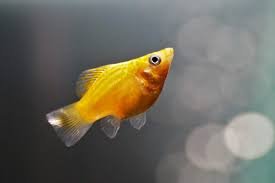
Mollies are very fine and colorful fish to have in your aquarium, many people do complain that they lose color. This could be very disheartening and very sad, but fish don’t just lose color for no reason, there are reasons why your fish might fade in color, and change from the fish you knew before to another thing. If you are wondering why your Molly lost its color, then this article will help you to understand why, and also give you some suggestions too.
Why is my Molly Fish losing color? Molly fish could lose color as a result of stress and bad water condition.
Seeing your fish’s color fade could be very worrisome and sad, but does it just happen? or are there some factors that cause it?
Well, there are some reasons why your fish’s once nice color might fade away, let’s look at some of them.

Why Molly Fish Could Lose Color
The possible reasons why your fish is losing color are:
1. Poor Quality Diets: One of the commonest reasons why fish in captivity could lose or fade in color is because of the type of foods they are exposed to.
Although fish are scavengers and will eat anything that could go through their mouth, the issue is, that not all foods are healthy for them.
In the wild, they can manage themselves nicely, but in captivity, giving them a particular food or some types of food could deteriorate their health condition, which could lead to loss of their natural color or something else.
Based on the opinion poll from many aquarists, they all agreed that they used some types of food such as Tetra-Color Flakes & granules, etc, to bring back the natural color of their fish.
From the opinion of many professional fish keepers about bringing back the natural color of their fish, this could only mean that a poor diet is one of the factors that could change the color of a fish.
2. Stress: Stress is one of the most common reasons why fish could lose their color or fade in color.

No animal like to be stressed, not even mollies.
Stress does a lot of things to animals, which include fading in color, being less active, becoming more aggressive, and even getting sick.
There are a lot of factors that could stress fish, which are poor water quality, small tank size, unsuitable tank mates, chemicals in the water, uncycled tanks, and the rest.
When they are stressed, their mode changes, and even their Heath too might change, which could result in fading in color.
Molly fish although are active and hardy too, they don’t like being stressed, if they are stressed, they may even die.
The only way to prevent this from ever happening is to keep your tank clean by changing the water at least once a week, get a water testing kit, and test your water always to know when any chemicals such as ammonia, nitrate, chlorine, etc forms.
Also, keep away unsuitable tank mates, and keep more females than males, so that the level of aggression in the tank will deplete drastically.
If you happen to see any aggressive and territorial fish among them, relocate it to another tank for some days, then bring it back.
With these steps, stress won’t be an issue for your fish again.
3. Diseases and Sickness: Sickness and diseases are factors that could make your fish lose its color or make the color fade away.
Some common diseases that could infect your Mollies and cause loss of color for them are Anchor Worms, Flukes, Bacterial, and many more.
These diseases could be very deadly, and might even kill them if they are not properly tackled at once.
So, once you notice any sign of them, contacting a Vet is your only option, for proper treatment.
These are the most common factors that could easily tamper with the color of your Molly fish.
Because of these factors above, your Molly could turn from Orange to black, from white to grey, Dalmatian to yellow or orange, Black to gold, white to yellow, etc.
In fact, these could make them change too many colors you can’t even seem to comprehend.
Conclusion
The key to all these is proper care and proper feeding.
